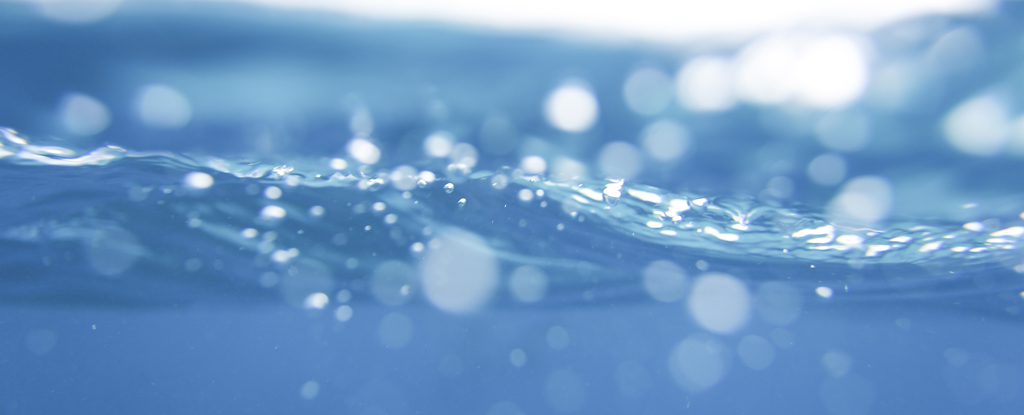Products You May Like
Life’s emergence in a ‘warm little pond‘ some 4.5 billion years ago is a relatively solid foundation of modern biology.
In spite of water’s vital role in facilitating early organic reactions on Earth, one of the most basic ingredients won’t form in aqueous surrounds, raising the question of how life initially acquired them.
A new experiment reveals how these critical chemical reactions might have taken place.
Amide bonds are the links in the chains of amino acids that form the foundation of so many crucial components of life, including peptides (short strings of amino acids) and proteins (longer strings of amino acids that can do work in the form of enzymes).
The problem is that amide bonds are actually hindered by water, which is something of a problem on an oceanic world like ancient Earth. Something else must have come into play, scientists think, and the new study suggests it was at the boundary of water and air that the magic happened.
“Here, we report a unique reactivity of free amino acids at the air–water interface of micron-sized water droplets that leads to the formation of peptide isomers on the millisecond timescale,” write Purdue University chemist Dylan Holdena and colleagues in their published paper.
“This reaction is performed under ambient conditions and does not require additional reagents, acid, catalysts, or radiation.”
The team sprayed microdroplets of water containing two amino acids, glycine and L-alanine, towards a mass spectrometer device for detailed chemical analysis. A chain of two amino acids, a dipeptide, was shown to form in the droplets.
Since dipeptides are able to build further amino acid chains, the results are taken to imply airborne microdroplets could have sped up the early construction of peptide chains by exposing dissolved amino acids to the air.
Billions of years ago, such microdroplets may have been produced in the form of sea spray was whipped up from the ocean, creating the essential chemical bonds for life to develop.
What’s more, the reaction observed in these experiments happened without the addition of any other chemical agents, catalysts, or radiation sources, making it more likely that it could have been happening billions of years ago on Earth.
“The observed generation of peptides from free amino acids at the air–water interface of pure water droplets, the simplest of all prebiotic systems, suggests that settings such as atmospheric aerosols or sea spray may have provided a unique and ubiquitous environment to overcome the energetic hurdles associated with condensation and polymerization of biomolecules in water,” write the researchers.
If the team is right, where microdroplets of water hit the air, at the smallest scales the environment might be dry rather than wet – which means it would be providing conditions where dipeptides can be synthesized.
Scientists have been busy looking at all kinds of explanations for how amino acid chains could have been formed in ocean environments. Hydrothermal vents may have played a role, for instance, or perhaps a visiting asteroid. Now, there’s a new option.
It’s still a hypothesis for now though, and future studies will be required to work out just how these amino acid chains are being put together – and how these basic chemical building blocks led to the life on Earth that we know today.
“This reactivity provides a plausible route for the formation of the first biopolymers in aqueous environments,” write the researchers.
The research has been published in PNAS.
